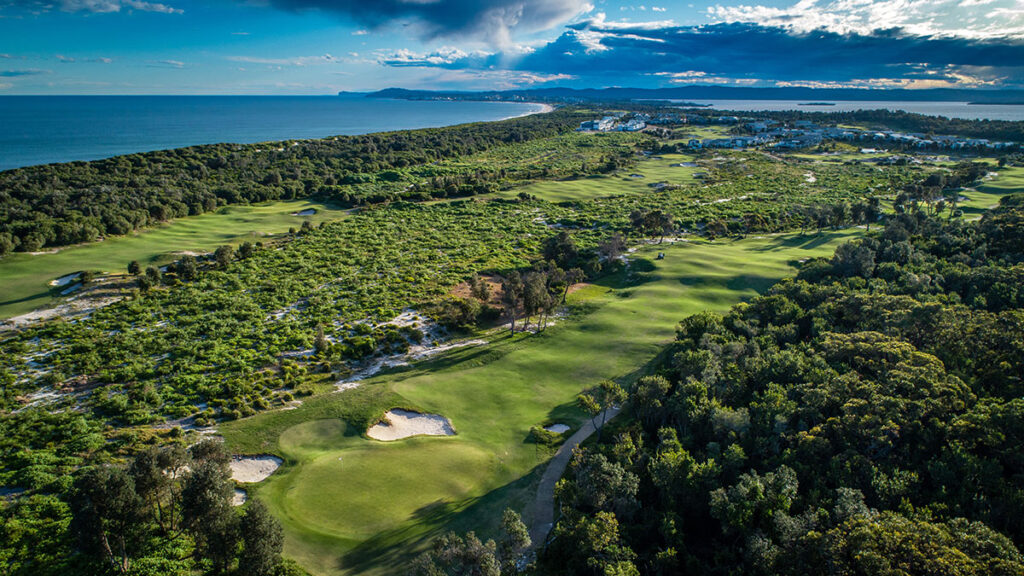The British Isles may be small but every square mile packs a punch. Viking’s ‘British Isles Explorer’ cruise takes in ancient cities to heather-clad mountains, royal palaces to the atmospheric pubs and close to some of the world’s most historic golf courses.
Like an Exocet missile, a peregrine falcon powers over South Stack, in Holyhead, Wales, diving for prey.
Two rare choughs, teaching their young to feed, escape by a millisecond; their glossy black finger-like wings giving them enough speed to out-manoeuvre the invader.
Beneath South Stack Lighthouse, thousands of puffins and guillemots make their home in the cliffs and we watch in awe as these agile birds dive for sand eels to feed their young.
We also wander over to The Range, a unique maritime heathland where the pre-Cambrian rocks are the oldest on Earth – now that’s so hard to get your head around. This is just one of the incredible days during a 15-day sailing around the British Isles.
▶ ▶ ▶
It’s a busy itinerary, but 930-guest Viking Venus is an elegant home-away-from-home with beautiful Scandi furnishings – rugs over designer sofas, natural textiles and wood finishes all in muted tones.
Calling room service and sitting on my balcony with a gin and tonic after a long day (every cabin has a balcony on Viking ocean ships) is just the ticket before dipping in and out of the huge spa’s hydropool and snow grotto. To my complete joy, I also find an infinity pool, near the Aquavit Bar, that’s so decadent with views over the sparkling, silvery sea.
I am up early to take a city tour of Dublin, the capital of Ireland. At the Garden of Remembrance our guide Mary can barely hold back the tears. It was here in 2011 that Queen Elizabeth II made her historic visit, the first by a British monarch to an independent Ireland, and a day that Mary will never forget.
“I am from Belfast and grew up during The Troubles,” she explained. “But the thing is, they were not really ‘troubles’. We were at war. My grandmother would cry when she sent me to school because she was never sure whether she would see me again.
“Even now, when a car exhaust backfires, I still jump because think it’s a bomb. I’ve moved to County Wicklow, but when I’m in Dublin I love to come to this garden to say, ‘Thank you for the peace.’
“The Queen did a great thing for us because for a long time it was unthinkable that she would come. She was so brave. She showed us respect and I am no longer afraid.”
We continue on a literary trail to learn more about Dublin’s authors James Joyce, Jonathan Swift and Oscar Wilde before visiting Trinity College to view the Book of Kells; an ancient illuminated manuscript that dates to 800AD.
Despite the heavyweight ancient and modern history, Dublin is a friendly city, buzzing with bars, shops and restaurants, so I hit them in that order. After a pint of Guinness in Temple Bar, I track down Avoca, a textile company that has been weaving woollen throws and blankets since 1723. A cream mohair and wool mix throw soon finds its way into my suitcase.
After liquid and retail refreshment, it’s lunch at The Bailey Bar and Café in Duke Street which has always been a hub of literary and political activity, welcoming artists such as Evelyn Waugh, John Betjeman and Charlie Chaplin. Al fresco dining is perfect for people-watching while tucking into a traditional beef and Guinness stew for 11 euros. Yes, Dublin is the only stop on this cruise where the currency is not pounds sterling.
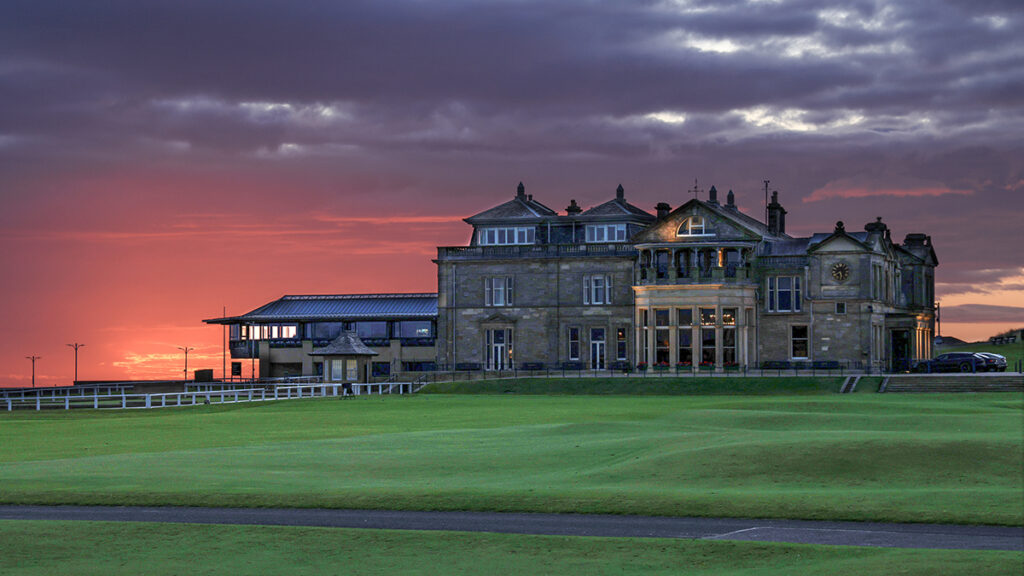
Oh, the places you’ll go
An excellent programme of lectures dovetails every port of call, so Viking guests can attend the talks or listen on the TV in their cabin to help make decisions on what they want to see and do. One excursion is included at each port but, for me, a mix of independent exploration and tours is the best way to enjoy a cruise.
I factor in plenty of time to be back at the ship as missing a departure is an absolute no-no. Otherwise, the ship has a really informal vibe with friendly and efficient service and, best of all, no need for dressing up at dinner. Smart casual is fine with me.
In Belfast, Harland & Wolff’s two giant yellow ship-building cranes ‘Samson and Goliath’ emblazoned with the letters H&W stand out as the ‘Hello and Welcome’ to the city.
It was here, on Belfast Lough, that RMS Titanic left for its fateful maiden voyage. In the Titanic Quarter (Belfast, interestingly, has six quarters!) Titanic Belfast houses a six-floor exhibition which tells the city’s side of the Titanic story from construction, launch and the maiden voyage to the changes that were made to maritime law after the sinking.
I had visited before, so found inner peace during a drive along the stunning County Antrim coastline on the way to the Giant’s Causeway. It’s no wonder the scenic road was voted the No.1 region in the world by Lonely Planet in 2018. Green patchworks of hills and glens, carved in the Ice Age, create a soft, mystical landscape draped with a silver-grey mist. We pass Ballymena’s pretty seaside towns and medieval Dunluce Castle, otherwise known as the House of Greyjoy in the TV drama “Game of Thrones”.
There is so much to take in on this wonderful cruise that in the evenings I have built up an appetite to do justice to the fine dining menus. Manfredi’s Italian proves a winner for dinner. I eat Dover sole twice in one week and can’t resist the thick-cut ribeye steak that’s been marinated for 72 hours. Desserts are not for sharing – they are far too good – and I declare the tiramisu a total triumph before a nightcap in Torshaven’s bar, which has a jazz club vibe.
On our only scenic sailing day, I make the most of the ship and find Mamsen’s for brunch, a waffle with berries and orange butter, then find a calm, comfortable corner in the atrium to read. There always seems to be plenty of space on this elegant ship.
Next, I am sitting by the indoor pool with friends for lunch, our favourites are grilled tuna and the veggie burger. I also have to admit to afternoon tea in the gracious Wintergarden while watching the world go by before the Irish Sea sailing to Liverpool.
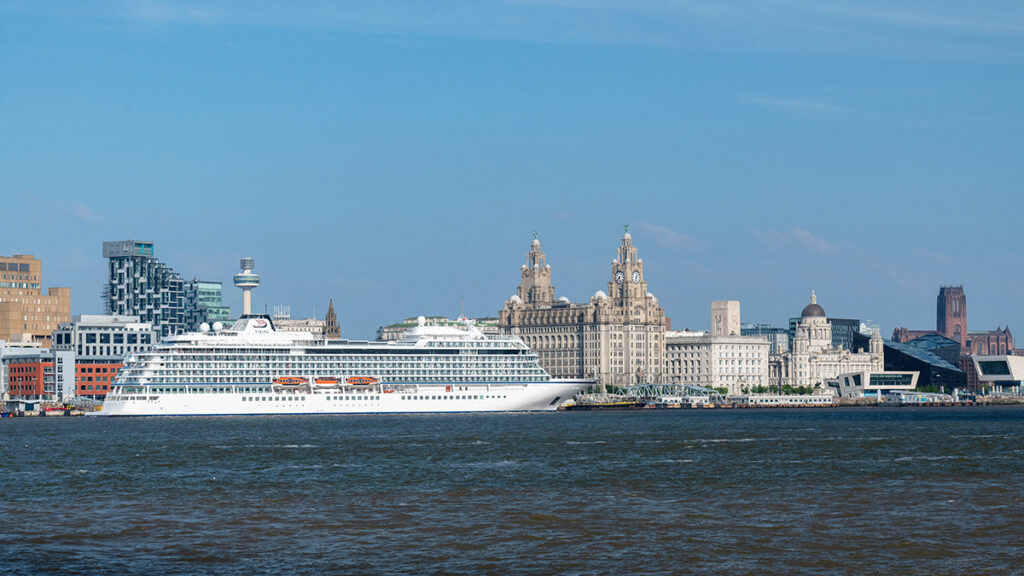
I’m whistling The Beatles’ tunes and Ferry Across the Mersey as the Three Graces come into view. These iconic waterside buildings – the Royal Liver Building, the Cunard Building and the Port of Liverpool Building – symbolise the city’s significance as maritime port. In fact, some 40 per cent of the world’s trade was passing through Liverpool’s docks in the 19th century.
The restored Royal Albert Dock, next to the cruise terminal, makes a beautiful backdrop for a stroll to The Beatles Story, a museum dedicated to the Fab Four which follows John, Paul, George and Ringo from their early beginnings to Beatlemania and beyond. It’s also worth signing up for the Magical Mystery Tour, a two-hour bus ride taking in landmarks such as Penny Lane and Strawberry Field. I make a pilgrimage to the Cavern Club, in Mathew Street, where The Beatles used to play and chat to friendly locals in The Grapes pub, another of The Beatles’ watering holes.
All this and I haven’t even mentioned Scotland, the Shetland Islands and the Orkney Islands. The Shetlands are the most northerly archipelago in the British Isles, all windswept land of farms and meadows that roll down to beaches where seals bask in the sun. I choose a tour along the Atlantic coast to soak up the scenery and learn about Shetland ponies that have been here for more than 2,000 years.
On the Orkneys, at the UNESCO-listed Ring of Brodgar, I stand in the 5,000-year-old circular ring of 27 remaining standing stones before heading to Highland Park for a private visit to the world’s most northerly whisky distillery.
Invergordon is our gateway to the heather-covered Scottish Highlands. Shakespeare fans go off to Cawdor Castle, reputedly Macbeth’s castle, where the murder of Duncan took place, while I take a different route to search for Nessie the Loch Ness Monster. No joy, but it’s lovely scenery.
In Ullapool, on the shores of Loch Broom, I take the high road into the wilds of Knockan Crag while fellow guests on the private-access tour of Castle Leod meet Chief of the Clan Mackenzie, Earl of Cromartie, whose family has lived here for more than 500 years.
In Scotland’s capital I head to Edinburgh Castle on a personal quest, my father was a Gordon Highlander so I want to see the regiment’s memorial. At the top of Castle Rock, for a little time alone for thoughtful pause, I am also rewarded with a panoramic view of
the city.
Meanwhile, Harry Potter fans are excited because author J.K. Rowling makes her home in Edinburgh so they take a peek at the grandiose independent school Fettes College, somewhere between Scottish Baronial and French chateau in style. It left them with no doubt that this ornate building was the inspiration for Hogwarts School of Witchcraft and Wizardry.
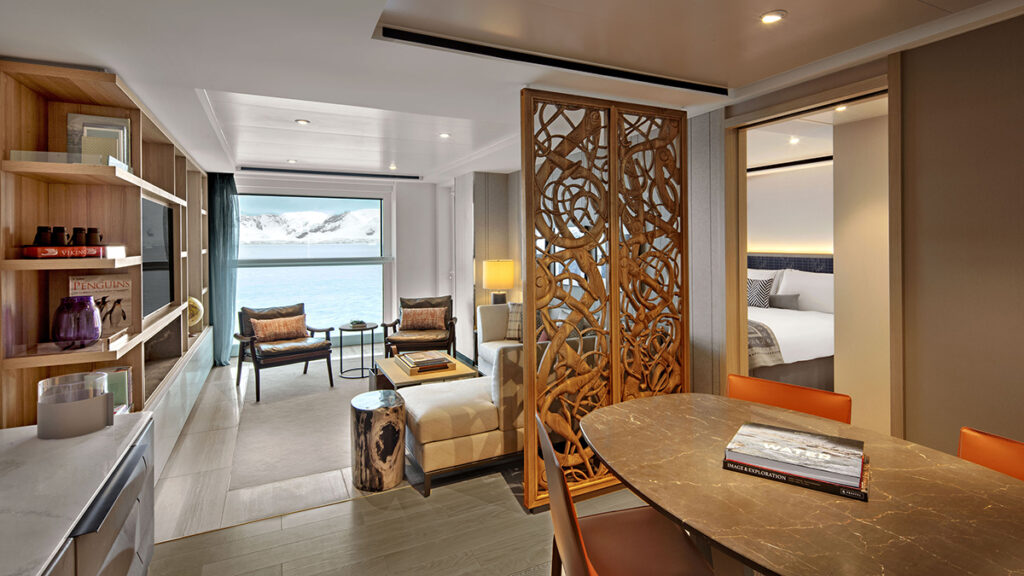

An arrival fit for a King
Probably the most stirring sail-in of the cruise is seeing Dover Castle rising above the White Cliffs while entering the port from the English Channel. Julius Caesar tried to land at Dover during the Roman Invasion of 55BC, although he ended up a little further around the coast at Richborough in Kent.
The castle, built soon after the Battle of Hastings in 1066, has been the site of all sorts of royal intrigue and epic sieges over the centuries, and during World War II it was at the centre of the effort to evacuate hundreds of thousands of Allied troops from Dunkirk’s beaches in 1940. Walking in the hilly 80 acres and visiting the Wartime Tunnels, Underground Hospital and Great Tower to climb up to the roof for views over the channel is really worth the effort but needs a reasonable level of fitness.
Fans of Charles Dickens can follow in his footsteps with a short stroll from the port along Dover’s esplanade to see 10 Camden Crescent, the Georgian terrace where the author stayed in 1852 while writing Bleak House.
We sail on to Dickens’ London, along the winding River Thames to Greenwich where Sir Christopher Wren’s Old Royal Naval College dominates the waterside before tea clipper Cutty Sark and the National Maritime Museum come into view.
London has so much to offer it’s worth every minute of planning your days. Viking tours include a Tower of London privileged access to see the Crown Jewels, a tour of Chelsea Physic Garden and a private visit to Shakespeare’s Globe, a reconstruction of the Elizabethan playhouse for which the playwright wrote his plays. However, if you also want to see blockbuster exhibition art exhibitions, a West End show or take afternoon tea at The Ritz or The Dorchester it is important to book well ahead.
Westminster Abbey, where the coronation of King Charles III recently took place, and Buckingham Palace, St Paul’s Cathedral, Tower Bridge, Tate Modern, Tate Britain and the Royal Academy of Art alongside Camden Lock, Covent Garden and the Southbank all merit a visit, so it’s worth thinking about extending your cruise holiday. Better still, if you can stretch the budget, linger even longer on Viking’s bespoke four-day extension to visit the gardens at Highgrove House, beloved by King Charles III; explore Highclere Castle, TV’s “Downton Abbey”; Broughton Castle, recognisable from Wolf Hall and Chavenage House, best known for its appearance in “Poldark”. This really is the cruise that keeps on giving.
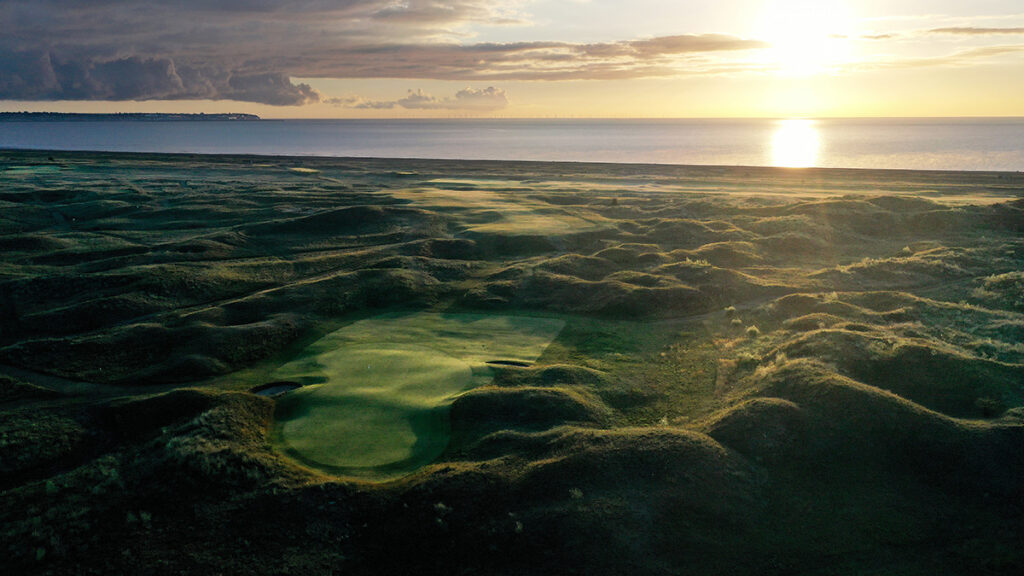
Hit The Links
There are plenty of opportunities to play golf during this Viking cruise, as the courses below all welcome guests. It is recommended, however, that you make your bookings well in advance, and ensure your tee-times fit comfortably within your allocated port times.
Belfast: A 15-minute drive from the Port of Belfast is Holywood, where the Royal Belfast Golf Club boasts Rory McIlroy as a member. Founded in 1881, it is the oldest golf club in Ireland and the views across Belfast Lough and the Antrim plateau are spectacular. (royalbelfast.com)
Dover: Royal St George’s, Sandwich, is a 20-minute taxi ride from the Port of Dover. The classic links course was the first in England to host The Open in 1894 and offers golfers one of the game’s most difficult tests. Royal patronage was granted in 1902 when the Prince of Wales (later Edward III) became club captain. It’s a natural course, next to Sandwich Bay, and the yawning fairway bunker on the fourth hole, which is cut into a dune, is the deepest in the UK. James Bond author Ian Fleming was a club member (and lunched there the day before he died of a heart attack, aged 56, in August 1964). 007 fans may also be interested to know the course is reputed to be the model for Royal St Marks Golf Club in the 1959 novel Goldfinger. (royalstgeorges.com)
Edinburgh: The modern game of golf is said to have originated in Scotland during the 15th century, so it’s understandable why golfers will want head off to the Royal & Ancient Golf Club of St Andrews. It is one of the world’s most prestigious golf clubs with large double greens and the Old Course is open to the public. To get there, allow just longer than an hour from the port. (standrews.com)
Greenwich, London: Royal Blackheath Golf Club, instituted in 1608, is England’s oldest golf club and a 15-minute cab ride from Greenwich. The 18-hole parkland is an oasis of green in south-east London, opposite Eltham Palace, probably the most important English private property built in the 20th century. It’s worth a visit while you are there – in the 1930s, millionaires Stephen and Virginia Courtauld added an Art Deco mansion to Henry VIII’s Tudor Great Hall. (royalblackheath.com)
Liverpool: Royal Liverpool Golf Club is one of the oldest seaside clubs and celebrated its 150th anniversary in 2019. It was the second English course to host the Open Championship, in 1897, and will stage the championship for the 13th time this month. Golf’s rules of amateur status were laid down here, although at the end of the 19th century St Andrews took on the role of governing body. The club in Hoylake, Wirral, is a 20-minute drive from the cruise terminal but build in time to allow for traffic. (royal-liverpool-golf.com)
Terms & Conditions:
*Conditions apply. Prices are per person, in Australian dollars, based on double occupancy, subject to availability, include all advertised discounts and are correct at time of printing. A partially refundable deposit is required at the time of booking. Guests are required to be fully vaccinated against COVID-19 at time of travel. Included flight credits are to be used towards flights booked by Viking, are subject to availability and are only valid if booked in conjunction with selected Viking Ocean cruises. All offers are valid on new bookings made between 1 June and 28 August 2023 unless sold out prior. For full terms and conditions including flexible deposit and flight credit offer visit viking.com

